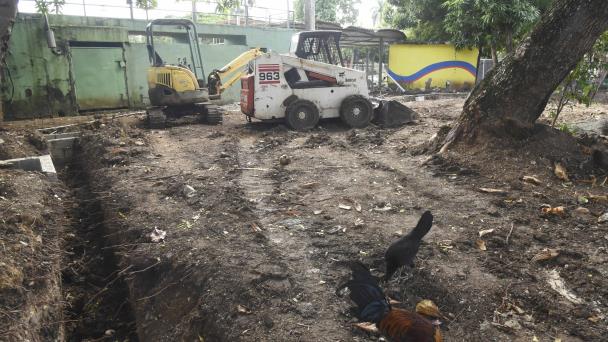After the meeting of the Monetary Policy Committee (Copom) in October, the Central Bank of Uruguay (BCU) increased this Thursday the monetary policy interest rate (TPM) again by 50 basis points (0.5%), up to 10, 75%seeking to anchor the inflation expectations of economic agents.
“The Copom analyzed the economic context, positively valued the transmission channels of monetary policy and reiterated its concern about the rigidity of agents’ inflation expectations,” says the meeting statement.
In that sense, “He understood the aforementioned increase to be necessary and timely, in accordance with the announcements made previously, and maintaining the path for the following sessions of this year’s committee, which would lead to rate levels consistent with the convergence of expectations towards the target range,” he adds.
In August, the BCU had increased the rate by 50 basis points to 10.25%. Since that meeting, the inflation expected by the median of analysts in the 24-month horizon (relevant for monetary policy) rose again and stood at 7% in September, according to the BCU survey, that is, 1 percentage point above the ceiling of the target range (between 3% and 6%) and far from the center of the range (4.5%).
For their part, Uruguayan businessmen project an inflation of 8.3% for the next 24 months. This implies that the contractionary policy that the BCU is promoting by raising the interest rate has not yet managed to anchor expectations.
The BCU also valued aspects of the international and local situation. In that sense, he mentioned the risks posed by the global situation.
As indicated, “In a challenging global environment, economic growth continues to deteriorate” due to the deepening of the war between Russia and Ukraine, rising global inflation, tighter financial conditions and China’s difficulties in regaining dynamism.
In addition, he indicated that “in Uruguay, the economic activity maintains an adequate dynamism that was ratified when knowing data for the second quarter of the National Accountsas well as leading indicators for the third quarter.
In the interbank market, every business day banks lend money at a daily rate (call). That rate —which the BCU sets as a policy reference— later ends up affecting the cost of money in the rest of the links in the domestic economy. A higher rate, more incentive to save over consumption. Some economic analysts are critical of this BCU policy because of its collateral effects on the economy and also because it tends to depreciate the price of the dollar against the Uruguayan peso.
Analysts’ reading
Economist Aldo Lema highlighted on his Twitter account that in addition to raising the MPR, the Central Bank emphasized the risks in the international situation and hinted that with increases (possibly similar) in November and December, there could then be a pause of around 12%.
In addition to raising the Monetary Policy Rate (MPR) to 10.75%, the BCU emphasized the risks in the international situation and hinted that with increases (possibly similar) in November and December, there could then be a pause of around 12%. https://t.co/M9FulTWhXL
– Aldo Lema – Uruguay (@AldoLema_uy) October 6, 2022
Both upcoming Copom meetings are set for November 15 and December 30.
For his part, the economist José Licandro wrote that the BCU “continues to bet on gradualism, so far without positive effects on expectations.”
The BCU continues betting on gradualism, so far without positive effects on expectations.
Tomorrow the INE publishes the survey of entrepreneurs for September. https://t.co/6vfZTyaByc– jose licandro (@licandro1) October 6, 2022
Meanwhile, the PwC economist, Ramón Pampín, stated that two signs are seen in the BCU statement: the China factor is added, and the negative external scenario is also reaffirmed.
With the temptation to act in “COPOM-ologo” (similar “Fed-ologo), there are 2 signs in this release: (i) the China factor is added (I don’t remember reading it in the last few) and (ii) the reaffirmation of the negative external scenario in the activity part. If so, adequate reading pic.twitter.com/YojeUBrTgh
– Ramón Pampín (@rpampin) October 6, 2022
inflation in september
In the ninth month of the year, prices rose 0.84%, according to information published by the National Statistics Institute (INE) and were above analysts’ expectations, which stood at a median 0.5%, according to the BCU survey. Much of this monthly variation was explained by strong increases in the prices of volatile items such as fruits and vegetables.







